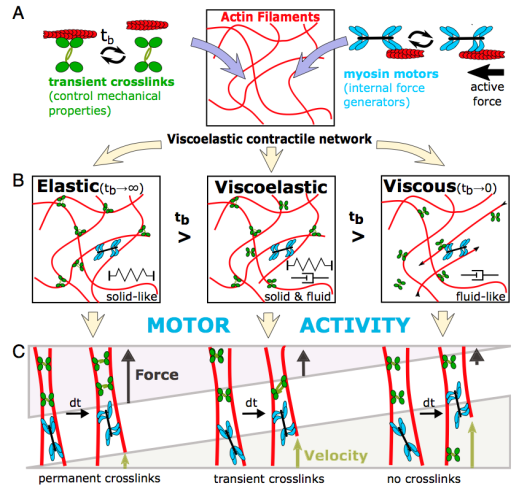Cells generate force to actively tune their mechanical properties
Living cells are active mechanical systems that are able to generate forces. Their structure and shape are primarily determined by biopolymer filaments and molecular motors that form the cytoskeleton. Active force generation requires constant consumption of energy to maintain the nonequilibrium activity to drive organization and transport processes necessary for their function. To understand this activity it is necessary to develop new approaches to probe the underlying physical processes. Active cell mechanics incorporates active molecular-scale force generation into the traditional framework of mechanics of materials. We focus primarily on intracellular mechanical measurements and theoretical advances utilizing the Langevin framework. These developing approaches allow a quantitative understanding of nonequilibrium mechanical activity in living cells.
 References:
References:
W. Ahmed, E. Fodor, T. Betz. “Active cell mechanics – measurement and theory”. Biochimica et Biophysica Acta – Molecular Cell Research. 2015 (DOI: 10.1016/j.bbamcr.2015.05.022) [open-access link]
W. Ahmed, T. Betz. “Dynamic cross-links tune the solid-fluid behavior of living cells”. Proceedings of the National Academy of Sciences USA. 2015 (DOI: 10.1073/pnas.1507100112) [link]